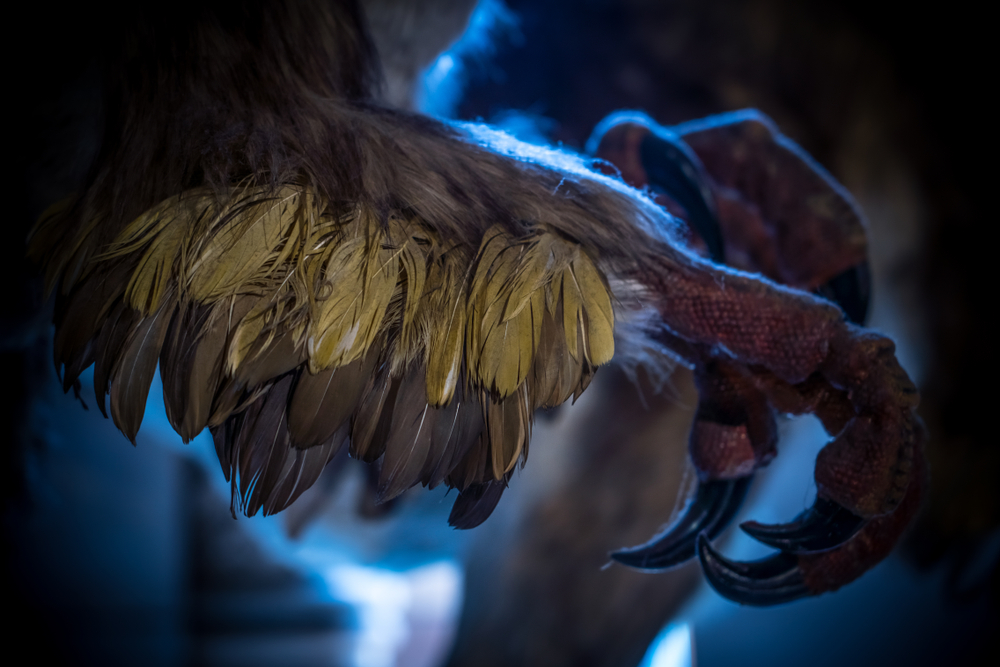
What’s more appetizing than a bite of fluffy feathers? Apparently not much about a rare species of arthropod from the planet’s distant past.
That’s because about 105 million years ago, ancient beetles were feeding on dinosaur feathers. In fact, fossilized remains captured in amber recently revealed this connection between arthropods and theropods, according to a paper published in Proceedings of the National Academy of Sciences.
(Credit: CN IGME-CSIC) Larvae of the beetles were found in close proximity to the feathers of theropod dinosaurs. .
Arthropods and theropods: a symbiotic relationship
Today, many arthropods maintain special, symbiotic relationship with a wide variety of vertebrates, and notable among these relationships are those between beetles and birds, whether they are mutualistic (both organisms benefiting), commensalistic (with one organism benefiting and the other unaffected), or parasitic (with one organism being beneficial and the other being adversely affected).
But despite the fact that arthropods and vertebrates have coexisted on the planet for more than 500 million years—and despite the fact that their coexistence is generally believed to have had a dramatic effect on the evolution of both—fossil evidence of symbioses between the two is were extremely difficult to find.
Now, fossil-filled fragments of ancient amber reveal a symbiotic relationship between the relatives of today’s beetles and birds, according to an international team of researchers.
Read more: Did all dinosaurs have feathers?
Dermestid beetles feed on the feathers
Taken from caves and outcrops throughout Spain, the amber fragments feature fossilized beetles and a wave of fossilized feathers.
According to the team, molts came from the ancestors of modern-day larvae dermestids. Playing a major role in balancing ecosystems, these beetles feed on natural fibers and other organic materials that are difficult for other organisms to digest. Today, they are commonly found burrowing into the nests of birds and mammals, munching on the feathers, fur and skin flakes that their vertebrate hosts leave behind.
(Credit: CN IGME-CSIC) This fossilized molt of a feather-feeding beetle larva was found in a piece of amber from the El Soplao outcrop in Spain. Moult length is less than one-tenth of an inch.
“The beetle larvae lived – feeding, defecating, molting – in piled feathers on or near a resin-producing tree, probably in a nest,” says Enrique Peñalver, a team member and researcher at the Geological and Mining Institute of Spain’s National Council for scientific research, according to a press release. “A stream of resin accidentally captured this connection and preserved it for millions of years.”
Dino feather fluff
Feathers, on the other hand, came from an unspecified species of theropod dinosaur.
“In our samples, some of the feather parts and other remains—including small fossilized droppings or coprolites—are in intimate contact with molts attributed to dermestid beetles and show occasional damage and/or signs of decay,” Penyalver said, according to the same publication. . “This is irrefutable evidence that the fossil beetles almost certainly fed on the feathers and that they were separated from their host.”
The fact that the down was separated from its host is important in determining the specific type of symbiosis between the feather-eating beetles and theropods, according to the team.
“It is unclear whether the feathered theropod host also benefited from the beetle larvae feeding on its shed feathers,” said Ricardo Pérez-de la Fuente, another team member and a researcher at Oxford University’s Museum of Natural History, according to a release. “However, the theropod was most likely unharmed by larval activity, as our data indicate that they did not feed on live plumage.”
Ultimately, the team emphasizes that their research reveals the evolution of arthropod-vertebrate relationships today, with arthropod symbionts transitioning from feathered theropods to birds during their eventual emergence, about 75 million years ago.
Read more: Dinosaur feathers found in ancient amber

